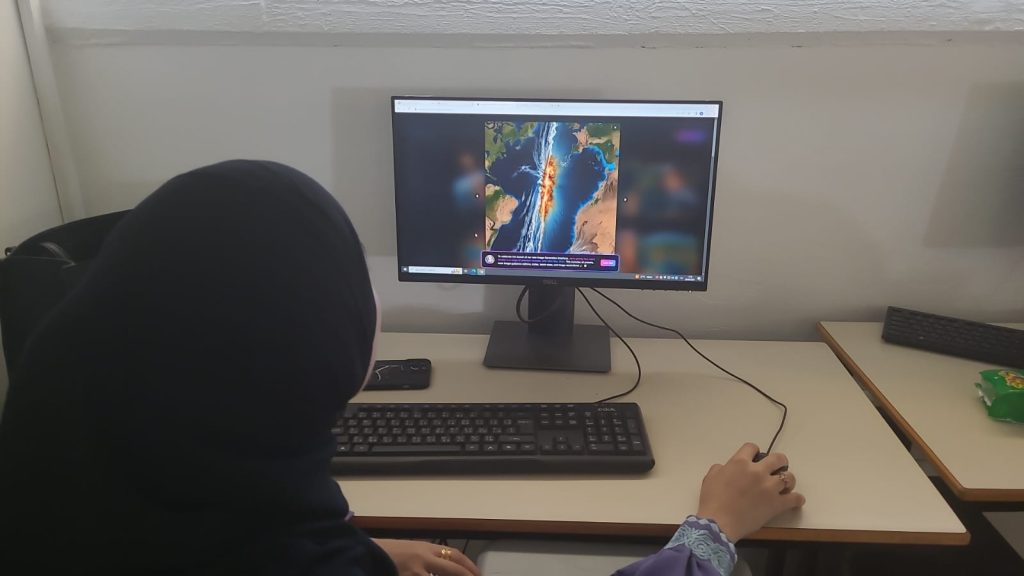Here are some relevant insights from the course: Being an Educator – My Toolbox, led by Mr. Idan Shavit as part of the “Netivim” program in Kaye college of education, Israel
- Bedouin students are hesitant about using websites that require registration. This notion made it more sensible for them to work with GIMINI that is connected to Gmail and thus does not require a special use permit. This hesitation or unwillingness to register bars them from using many AI tools. It is recommended to dedicate some time to discuss this issue, and perhaps start the course with creating specific email addresses for the purpose of using AI tools (by the way, this is a concern that many people have mainly around privacy issues).
- Young Bedouin students tend to cling-on to the ‘familiar and known’, and so they will often use the examples given during the course itself. To address this issue, it is recommended to give as many different types of examples as possible.
- It is very important to allocate work-time while the students are in class so that they can experience the tools and their products with the assistance of the lecturer (if necessary).
- It is very important to work with the students step by step. Not to let them settle for the first product, but rather to teach them how to optimize the product and the work process. It is recommended to require them to show the work process and how they refined and optimized the product.
- Relevance – if you connect the work to the material they are learning/will be teaching (Hebrew/Geography), it becomes easier for them to grasp its value and connect the use of AI to the learning and teaching processes.
- Playful learning– This isn’t easy since it requires a lot of planning. You should plan this in advance and create at the beginning of the course a playful learning process that enables the students to explore and experiment with AI in a natural manner, it can be very beneficial to their learning experience especially considering the cultural barriers. (However, it might not be suitable for the NETIVIM population).
- Group working – this methodology is very common in NETIVIM and corresponds with the collective culture in Bedouin society, it is very important to conduct it in the classroom in order to ensure that the team works well together and allocates tasks and responsibilities to all the group members
- Natural learning – asking the students to independently surf the NET and speak with friends so they can find AI tools that interest them, experiment with them and present them in class. This methodology has yet to be executed in NETIVIM since it requires self-managed learning and internal motivation which is somewhat lacking in the young students who are used to external motivation and traditional teaching.
- Enthusiasm – the students were in their third year, tired and overloaded with difficult courses and assignments. You need to get them excited about the course and make them understand what a big thing it is, and how much it will help them in their career. (one way to do this is to repeat the mantra: “if you know how to use AI, you would be several steps ahead of the other teachers and this is the tool of the future people who do not know how to use it will be left behind”).

About the course:
Being an Educator – My Toolbox / Mr. Idan Shavit (M.Ed.)
This course is designed for emerging educators in the Bedouin community, aiming to impart a range of technological pedagogical tools, with a particular focus on artificial intelligence. It combines theoretical knowledge with practical application, encouraging students to explore diverse technological tools in education through creative thinking, playfulness, and collaborative research.
Participants will develop the skills necessary to integrate these tools effectively into their teaching practices. The course curriculum is designed to align with the Ministry of Education’s 2024 objectives for future-oriented pedagogy, emphasizing the role of technology in shaping the desired graduate of the education system. Students will engage in building educational or didactic tools using AI, experimenting with various technologies to enhance teaching outcomes.
For their final project, students will choose to design a lesson plan for teaching a geographic term or Hebrew as a second language, using AI. This project underscores the practical application of AI in education, demonstrating innovative strategies to optimize learning experiences.
Assessment is based on in-class assignments and the final project, ensuring that participants not only understand but can also apply AI tools to real-world educational challenges.

